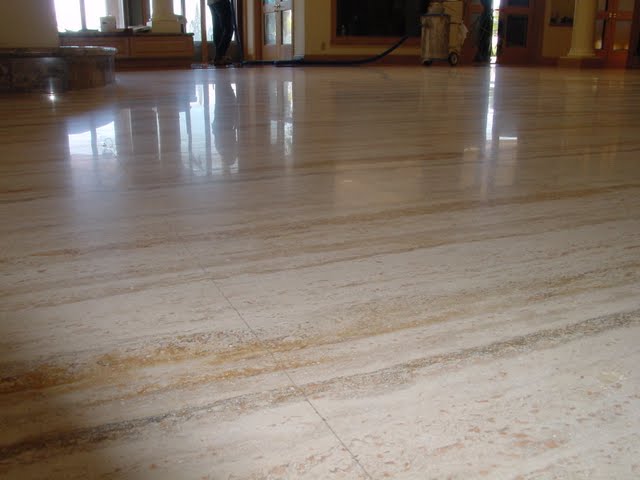By Mike Marsoun
In Australia there is a unique trade practice which should be considered, discussed, and properly addressed.
The root of this problem is the same as in the US where you will find ceramic tile installers stepping into the area of natural stone tiles, which is a skill really more suited for a stonemason. Since the stone tiles are essentially the same size and shape as ceramic tiles, the reasoning is that laying could not be too different and one could use the same techniques.
Nothing could be further from the truth. The density, porosity, stability, colour consistency, and size/thickness consistency is all very different in stone and for a proper installation all of these factors need to be considered. Where one could lay most ceramic tiles with certain setting materials and technique, this is not the case with natural stone.
The problem I have seen in a large majority of floors is the incorrect use of sanded grout. The situation goes like this: generally speaking, the materials companies put grout into two classifications, Wall Grout and Floor Grout. The Wall Grout is always un-sanded, and the Floor Grout is always sanded. This way of specifying grout is unique to Australia. In the US and Europe grout is simply Sanded or Un-Sanded/Non-Sanded and it is usually left up to the installer to determine where it is used, and they will choose based on the joint size.
It is important to note that typically (per international standard practice) un-sanded is made joints 3mm or less, and sanded grout is made for joints greater than 3mm. The un-sanded grout is better suited to filling smaller gaps, flows better and has the ability to stay consistent. Sanded grout will not have the depth of penetration in the smaller joints and the consistency will change as it is spread-some areas become heavy on the sand and light on the cement component, this makes for very weak grout which will come out with scrubbing or pressure cleaning.
This problem is most relevant on stone floors (travertine, marble, limestone), where a 3mm or smaller joint is typically used. Due to the porosity of these stones, the sanded grout has an even greater problem staying hydrated and therefore has even less penetration. The stone tiles are also thicker and do require the grout to achieve a deeper penetration into the joint then with ceramic tiles.
In addition to the above, sanded grout makes full restoration grinding very difficult, if not impossible.
What happens is this. The grinding is done in a series of steps, starting aggressively with flattening, then onto the honing steps which bring up the shine. When the honing steps are being done the work environment has to be very clean, any hard debris could get under the abrasives and cause scratches. So, when the grinding is carefully brought up to a nice hone and some silica sand inevitably comes out of the sanded grout joint this will leave scratches. This is why in most every case a stone floor with sanded grout cannot be fully flattened and restored.
I have seen this in most marble/limestone floors in Queensland which I have looked at for restoration and it is unfortunate because it is so unnecessary. Clients want to have a complete restoration job and I have to tell them I cannot guarantee against scratches, or to select another restoration option.
Of course there are other options for restoration, but they are second best. Anyone who has seen a properly flattened marble floor, with the correct grout, understands. The un-sanded grout (cured and seasoned), will in most cases polish or hone almost identical to the stone itself and the “seamless” look is absolutely stunning (see photos).
 International standard practice is that dimensional stone floors should always have joints of 3-4mm or less, therefore should always receive an un-sanded grout. A collective effort should be made to educate installers and designers of this. I believe this will have a positive long term effect for the stone industry here in Australia, as floors will be more attractive and have greater longevity.
International standard practice is that dimensional stone floors should always have joints of 3-4mm or less, therefore should always receive an un-sanded grout. A collective effort should be made to educate installers and designers of this. I believe this will have a positive long term effect for the stone industry here in Australia, as floors will be more attractive and have greater longevity.Published in Discovering Stone Magazine, Sept. 2010

